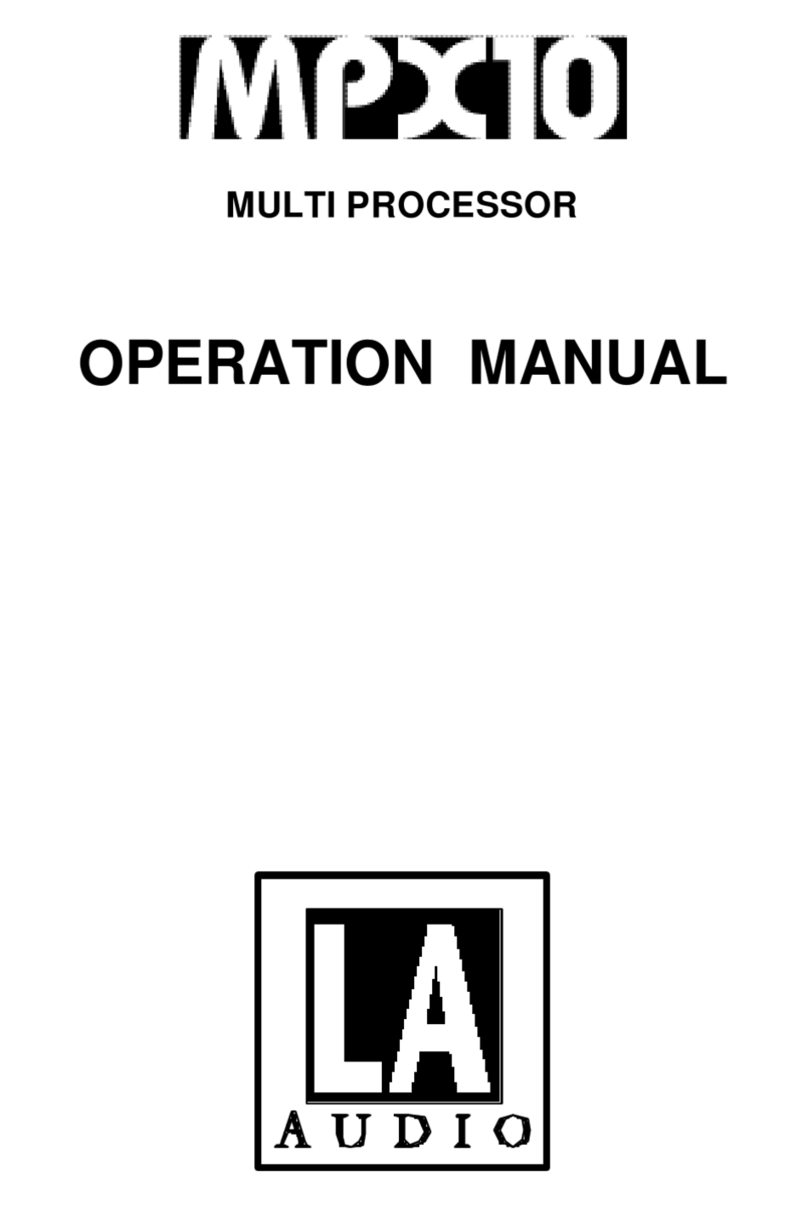POWER INLET
The LA Audio DLX200 series unit should be connected to a suitable mains electricity supply using
the cable supplied. The processor has a switch mode power supply that is capable of operating with
a nominal mains voltage of 85V to 240V, 50/60Hz without re-configuration.
BVNET CARD SLOT
To allow for future developments. See www.laaudio.com for all news and product information.
AUDIO INPUT CONNECTORS
All audio connections are fully balanced and wired pin-1 ground, pin-2 hot & pin-3 cold. The two
inputs have pin-1 connected directly to the chassis and feed the signal processing chains. If an
unbalanced source is used, a connection should be made between the pin-3 ‘cold’ signal and the
ground connection of the unbalanced source.
AUDIO OUTPUT CONNECTORS
The processed outputs are impedance balanced, and wired pin-1 ground, pin-2 hot and pin-3 cold.
An unbalanced input may be driven by connecting pin-3 ‘cold’ signal to the ground connection of
the unbalanced destination input. Note that output pin-1’s are ground lifted at audio frequencies
but connected to ground at RF for good EMC performance. The intention being that the amplifiers
being driven by the processor should be responsible for the grounding of their input cable shields.
SECURE BUTTON
A momentary button is recessed into the rear panel, between the output XLRs and RS232 port.
When activated, this will disable all the front panel controls so they cannot affect the signal path,
making the unit secure against tampering. When in secure mode, the indicators still operate
normally. Note that the communications port is still active in secure mode.
COMMUNICATIONS PORT
Allows PC control using PodWare. For more information, see your PodWare user guide, or go to
www.laaudio.com.




























